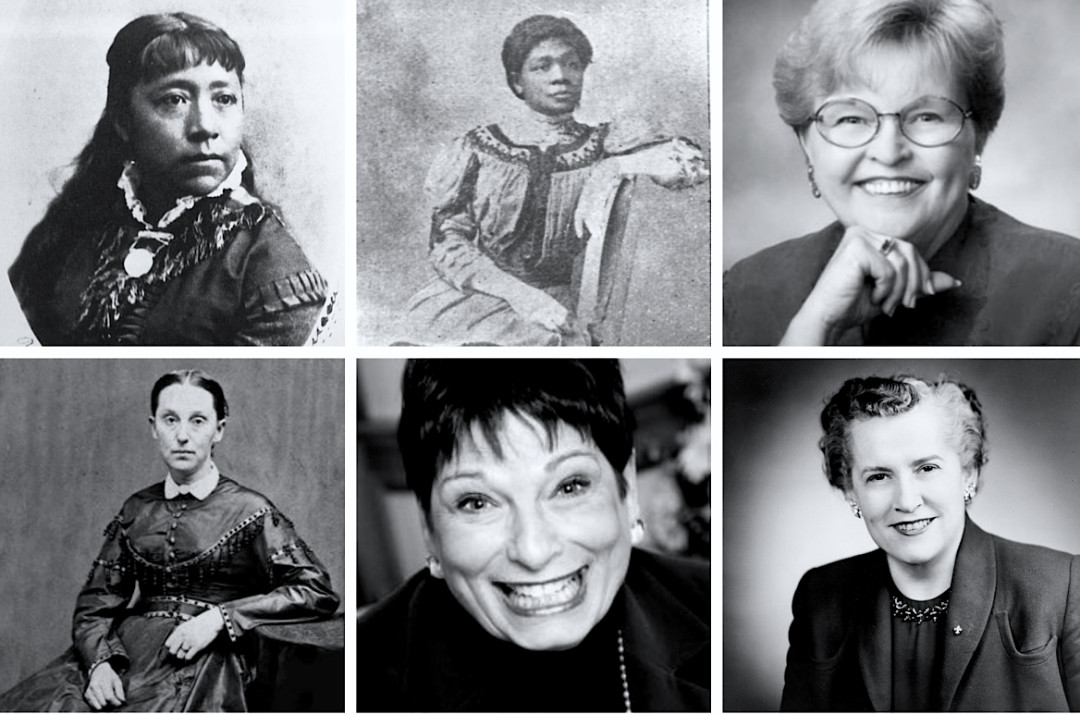How Women Came to Run this State

Look around. Right now, Oregon is enjoying the reign of an unprecedented group of women leaders, from our governor, Kate Brown, to our state House representative, Tina Kotek, our attorney general, Ellen Rosenblum, and our secretary of state, Jeanne Atkins. But wait, there’s more! Add Senate president pro tempore Ginny Burdick, Senate majority leader Diane Rosenbaum, and House majority leader Val Hoyle to the list, and it becomes clear that women are pretty much running our state right now.
How did this happen? Well, Oregon history offers a powerful legacy of influential women leaders who we can thank for cobble-stoning the way from 1800 to 2015. Here are nine who should not be forgotten:
SARAH WINNEMUCCA (1884–1891)
The first known American Indian woman to write a book, Paiute diplomat and translator Sarah Winnemucca served as an important—if at times controversially reformist—voice from the Paiute people, one able to advocate in English. She worked in southeastern Oregon for peace and native sovereignty in negotiations with white people who, she wrote, came “like a roaring lion.”
ABIGAIL SCOTT DUNIWAY (1893–1915)
So influential was Duniway during her over 40 years as a women’s rights activist that when—after five failed legislative attempts—Oregon gave women the right to vote in 1912, the governor asked her to personally write and sign the Oregon Woman Suffrage Proclamation.
GEORGIANA MARTIN BURTON (1843–1918)
One of 32 women to found the Ladies’ Relief Society in 1867, Burton helped several organizations minister to the needs of homeless women and children. Today Portland provides services to a population experiencing homelessness at the 15th highest rate in the country (among cities), while the education and health services sector employs a higher percentage of women than any other.
HARRIET “HATTIE” REDMOND (1862–1952)
The daughter of emancipated slaves, Redmond was the women’s rights activist and black leader serving as president of the Oregon Colored Women’s Council in 1912, the fateful year in which Oregon women gained the franchise. She also spent 29 years working as a janitor for Oregon’s U.S. District Court; one can only daydream about what might have happened had she presided over it instead.
MARIAN TOWNE (1880–1966)
In 1915, only three years after women’s suffrage was achieved in Oregon, Towne went house-to-house campaigning for a seat in the Oregon House of Representatives. She won, becoming Oregon’s first female state legislator.
NAN WOOD HONEYMAN (1881–1970)
Wood Honeyman became the first female congresswoman, in 1936, and was a delegate to the state constitutional convention at which Oregon ratified the 21st amendment, ending Prohibition in 1933. Her father, the anarchist C.E.S. Wood, had represented Socialist feminist icon Margaret Sanger in court when she was arrested by the city of Portland for lecturing about birth control in 1916.
EDITH GREEN (1910–1987)
In a creative and influential twist on Oregon women’s tradition of passionate education reform—Winnemucca founded a school for native children, Duniway was involved in public education reform, and women’s right to vote in school elections was leveraged by suffragists to gain women the franchise—Oregon congresswoman Green played a pivotal role in passing 1972’s Title IX, which prohibited discrimination in federally-funded education programs and changed women’s sports forever.
VERA KATZ (1933-)
In 1993 Oregon’s first female Speaker of the House, a German-born Jew forced by the Bolshevik Revolution and WWII to flee Europe for New York, became Portland’s 53rd mayor. Katz remained mayor for 12 years and is remembered for her passion for school reform and health care—as well as a certain “feistiness” so notable that the Washington Post used that exact word to describe her in 1985, 1998, and 2004.
BARBARA ROBERTS (1936-)
When elected as Oregon Secretary of State in 1984, Roberts became the first state official fêted by a gay choir. She would later become Oregon’s first female governor in 1991, and continue to support gay rights and women in leadership.




